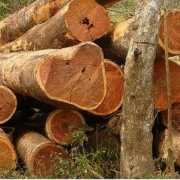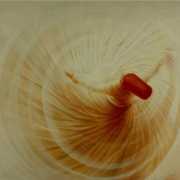Australian Sandalwood – Properties, Distillation, and History
Table of contents
Australian Sandalwood: Botanical Identity and Overview
Australian Sandalwood, botanically known as Santalum spicatum, also known as Waang and Dutjahn, is a timber tree endemic to semi-arid regions of Southwest Australia. The oil derived from Australian Sandalwood is considered a precious ingredient in perfumery, incense, medicine, and food products.
Australian Sandalwood is fine-grained, yellow, and heavy, and more importantly, it can retain its aromatic substances for decades. They’re among the most expensive woods in the world. The fragrance of the oil has been highly respected for centuries.
Properties
The oil derived from the woods contain a variety of components, many of which show antimicrobial properties and contain ximenynic acid. Due to its highly impressive fragrance, the essential oils of Australian Sandalwoods are often used for preparing natural perfumes which are widely respected in aromatherapy.
The oil is also added to scented cosmetics and soaps. Therefore, it has significant healing properties used in herbal medicine to treat both physical and mental conditions, including fever, common cold, inflammation, bronchitis, and urinary tract infections.
Sandalwood oil is found effective in reducing anxiety and tension, and associated symptoms such as heart rate and blood pressure. It’s also beneficial in skin-related issues, therefore, used in sunscreen, face cream, moisturizers, skin cleansers, and anti-aging products.
Sandalwood oil produces a distinctively warm, smooth, soft, creamy, and milky smell. It imparts a woody and long-lasting base to perfumes. It acts as a fixative in citrus and floral fragrances and enhances volatile substances’ longevity in the composite.
Sandalwood oil is used as the key ingredient in the “floriental” category fragrance when blended with white flowers like ylang-ylang, Jasmine, Orange Blossom, and Tuberose. It also blends well with other scents like Oakmoss, Clove, Rose, and Frankincense.
You can check out our Sandalwood composition with rose and frankincense Holy water here.
You can check out our Sandalwood composition with Oakmoss here.
Distillation
The Australian Sandalwood timber is finely chipped before sending to the distillation plant. To extract the oil from the wood, especially stump and root, Sandalwood must be distilled. Different distillation methods are used including water distillation, solvent extractions, CO2 extractions, and steam distillation. The most popular method is steam distillation that’s used by the Sandalwood industry.
In steam distillation, water is heated to higher levels of temperatures, commonly 60o C – 100o C, and is passed via the wood. The hot steam causes the release of oil from the wood which remains tightly bound within the cellular structure. The condensed mixture of Sandalwood oil and vapor is then cooled to separate the essential oil. This process takes much more time compared to other essential oil distillation, around 20 to 36 hours to complete, but usually produces much better-quality oil.
According to AgriFutures Australia in 2020, an Australian statutory corporation established by the Australian Government in 1990, the Australian Sandalwood industry supplies approx. 40% of the global Sandalwood Oil market.
History
In the 1840s, Australian Sandalwood was Western Australia’s highest source in export earnings. In 1875, the first time the essential oil is distilled from the Australian Sandalwoods, and by the turn of the 20th century, the production was intermittent. However, in the 1990s, Australian Sandalwood oil got a chance to revival and significantly increased production by 2009. The major portion of the Australian Sandalwood oil production went to the fragrance industries in Europe.
Indian Sandalwood or Santalum album is a threatened Sandalwood species native to Southern India and Southeast Asia. This species mainly grows in the Western Ghats Mountain range and very few other rock areas like Shevaroy Hills and Kalvarayan Hills.
Santalum album is distributed in Andhra Pradesh, Mysore, and Kerala of Southern India is very high in quality and is the traditional source of Sandalwood oil, also famous as Mysore Sandalwood.
In Kununurra in Western Australia, Santalum album or Indian Sandalwood trees are grown on a large scale. India used to be the global leader in the Sandalwood Oil market. But due to illegal overharvesting by smugglers, the distillation of Mysore Sandalwood has stopped.
The Sandalwood trees and their harvest are controlled by the Government of India. The global market of Indian Sandalwood has been overtaken by Australia in the 21st century to fill the emptiness of the market that’s created by the Indian disaster. In 2013, the Australian Santalum album went on the market for the first time.
For Sandalwood lovers, who witnessed the extinct situation of Mysore Sandalwood and were subdued in the crisis, it’s a great opportunity to taste Australian Sandalwood which is very alike the Mysore Sandalwood.
The Australian Sandalwood is just a little bit wilder and stronger than the Mysore, which is a plus point because the Mysore qualities are fully there.
The Australian Sandalwood reflects the smells of Australia’s harsher and wilder land, while the Mysore exposes the softness of ancient Indian civilization. However, Australian Sandalwood is an extremely valid choice for the extinct Mysore Sandalwood, a real revivification of the unforgettable bewitching scents.
Final words
Due to its unique subtle scent along with a pleasant wood-based note, Australian Sandalwood is used as the key ingredient in many natural perfumes. It produces a sweet, woody, smooth, balsamic smell along with excellent fixative properties.
Synthetic Sandalwood perfumes may produce adverse effects while natural perfumes are safe and act as a healing agent in several physical and emotional conditions.
The gentle oil of Australian Sandalwood is very effective in calming agitated anxiety and relieving tension. When inhaled or diffused, it helps to relax the mind and body from the hassles of everyday life. Once you use natural Australian Sandalwood, it will be easy to understand why it has been highly respected for centuries.
Enjoy our wonderful natural Australian Sandalwood products from the list below.
Sandalwood – Australian spicatum
Oakmoss – Oakmoss, Sandalwood, and Vetyver
Holy water – Sandalwood, Frankincense, and Rose
Disclaimer
Though Australian Sandalwood is usually safe for most people, still, a small allergy patch test is great before using any new product on the skin. It’s not recommended to take any essential oil internally without the supervision of a licensed medical practitioner or a qualified clinical aromatherapist.






















Leave a Reply
Want to join the discussion?Feel free to contribute!